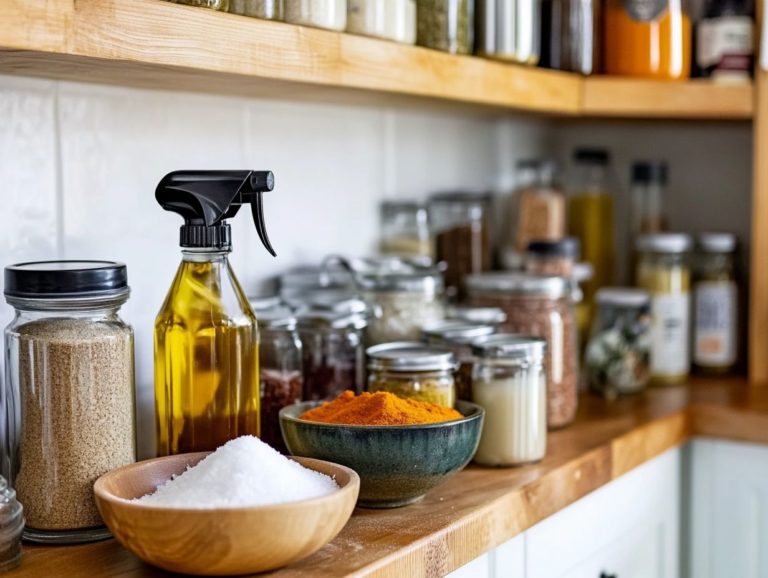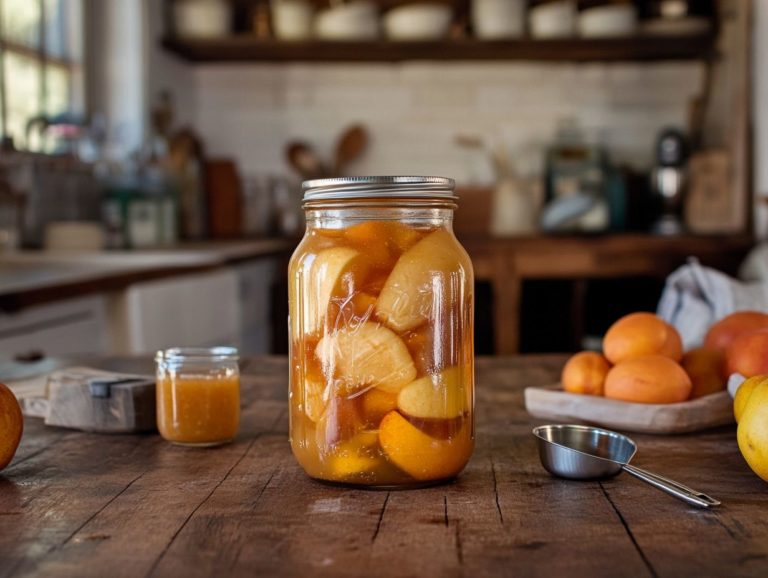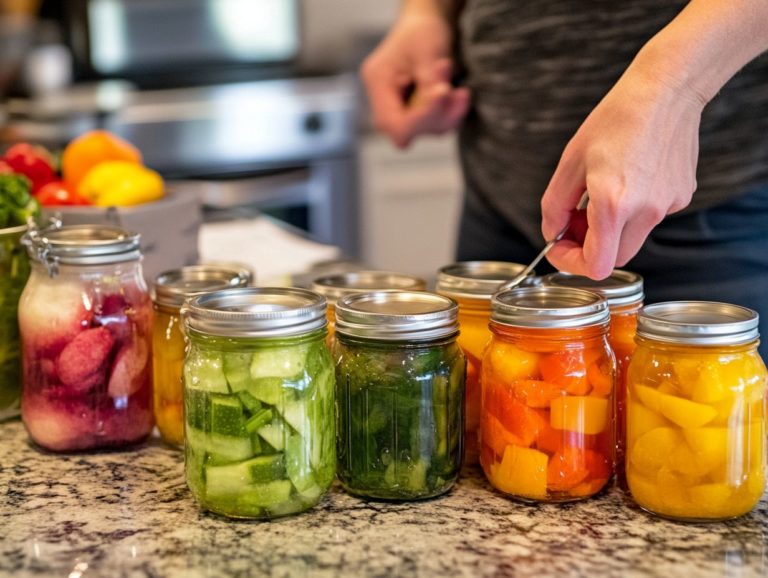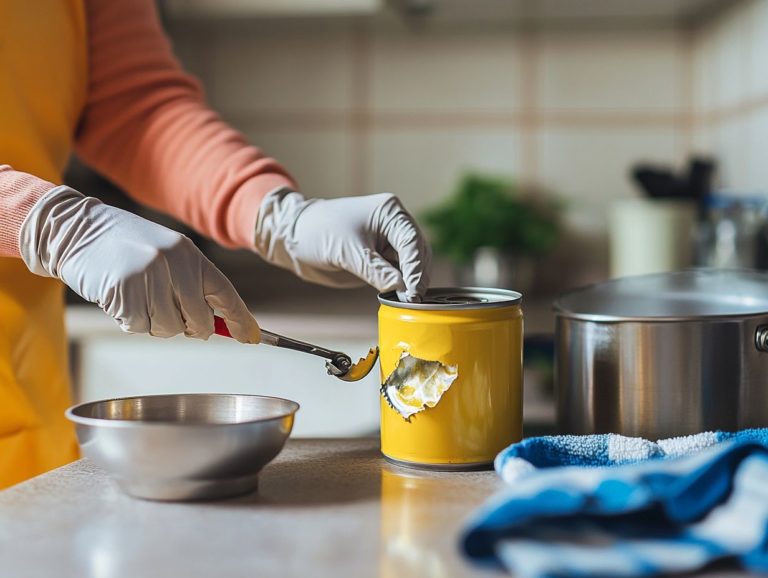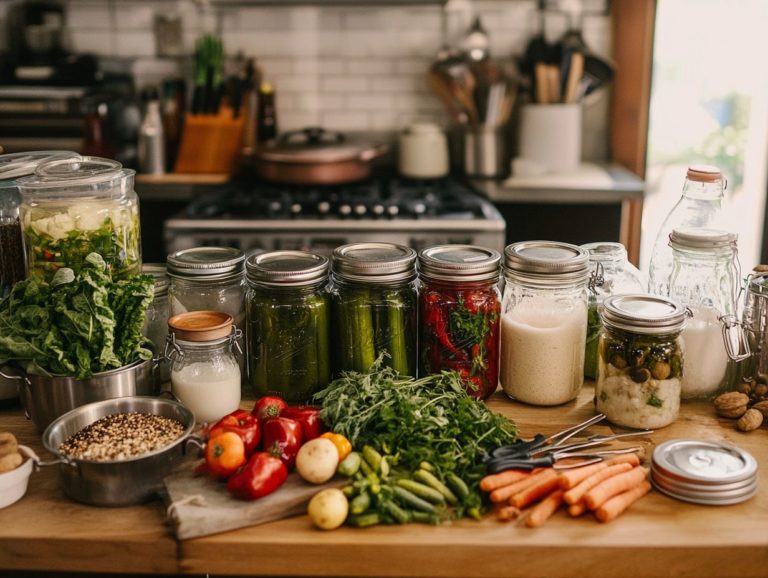How to Fix Rubber Seals in Canning
Rubber seals are essential for maintaining the integrity of your canned goods, safeguarding their freshness and preventing spoilage.
Over time, these seals can deteriorate, leading to a range of concerns.
Let’s dive into the common signs of wear and tear in rubber seals, examine the causes of damage, and provide you with a step-by-step guide for repairing rubber seals.
You ll also discover tips for maintaining them to extend their lifespan, along with alternative sealing methods.
Explore the insights within to keep your pantry well-stocked and your preserves secure!
Contents
- Key Takeaways:
- Common Issues with Rubber Seals
- Repairing Rubber Seals in Canning
- Preventing Future Damage
- Alternative Solutions
- Frequently Asked Questions
- How do I know when it’s time to replace my rubber seals in canning?
- What tools do I need to fix rubber seals in canning?
- Can I reuse rubber seals in canning?
- How do I properly clean and maintain my rubber seals?
- What should I do if my rubber seals are too big for my canning jars?
- Can I use any type of rubber seal for canning?
Key Takeaways:
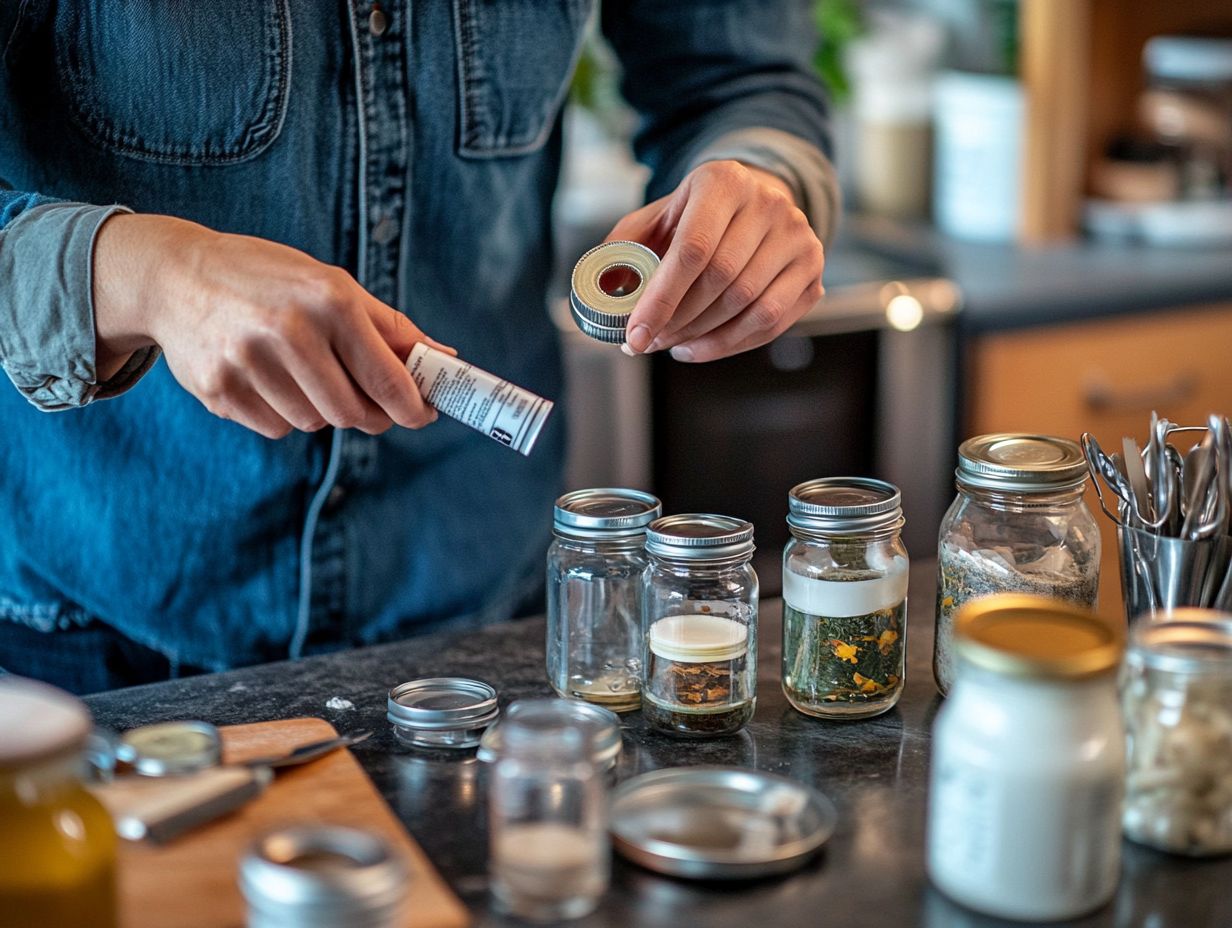
- Check rubber seals regularly for wear to avoid spoilage.
- Cleaning and lubricating seals can make them last longer.
- If repairs fail, try different sealing methods or materials.
Understanding Rubber Seals: Why They Matter
Rubber seals are a crucial part of the canning process. They create an airtight environment that helps keep food safe and extends shelf life. These seals form a barrier when you process jars using methods like boiling water baths or pressure canners.
This airtight barrier is vital because it stops air and harmful germs from causing spoilage. Effectively using these seals allows you to rely on established food preservation methods to maintain the quality of a variety of products, from pickles to fruits.
Follow food safety guidelines. Use tested seals and avoid damaged ones to keep your jars safe. Seal failures not only risk your food s safety but can also lead to unsightly issues that compromise the overall presentation. It s imperative to ensure your seals are in optimal condition.
Common Issues with Rubber Seals
Despite their crucial role, rubber seals can face several challenges that threaten your canned goods, leading to seal failure and spoilage.
Problems like food particles blocking the sealing surface, inadequate cleaning of jar rims, or using old lids can undermine the effectiveness of rubber rings during the canning process.
By familiarizing yourself with these common pitfalls, you can maintain the highest standards of food preservation.
Signs of Wear and Tear
Recognizing the signs of wear and tear in rubber seals is essential for successful canning and food preservation. Look for common indicators like visible cracks or brittleness in the rubber, as well as a concave lid that fails to create a proper seal.
Ignoring these signs can lead to seal failure and spoilage of your preserved foods. Stay vigilant for any discoloration, which may indicate degradation and reduced elasticity, ultimately affecting the seal’s ability to maintain airtight conditions.
Any unusual softness or tackiness in the rubber could mean the seal is losing its effectiveness. These conditions not only compromise the vacuum needed to keep your contents fresh but also increase the risk of bacterial growth, jeopardizing the safety and longevity of your preserved items.
Conducting proper inspections and replacing worn seals on time can significantly enhance the quality of your stored foods.
Causes of Damaged Rubber Seals
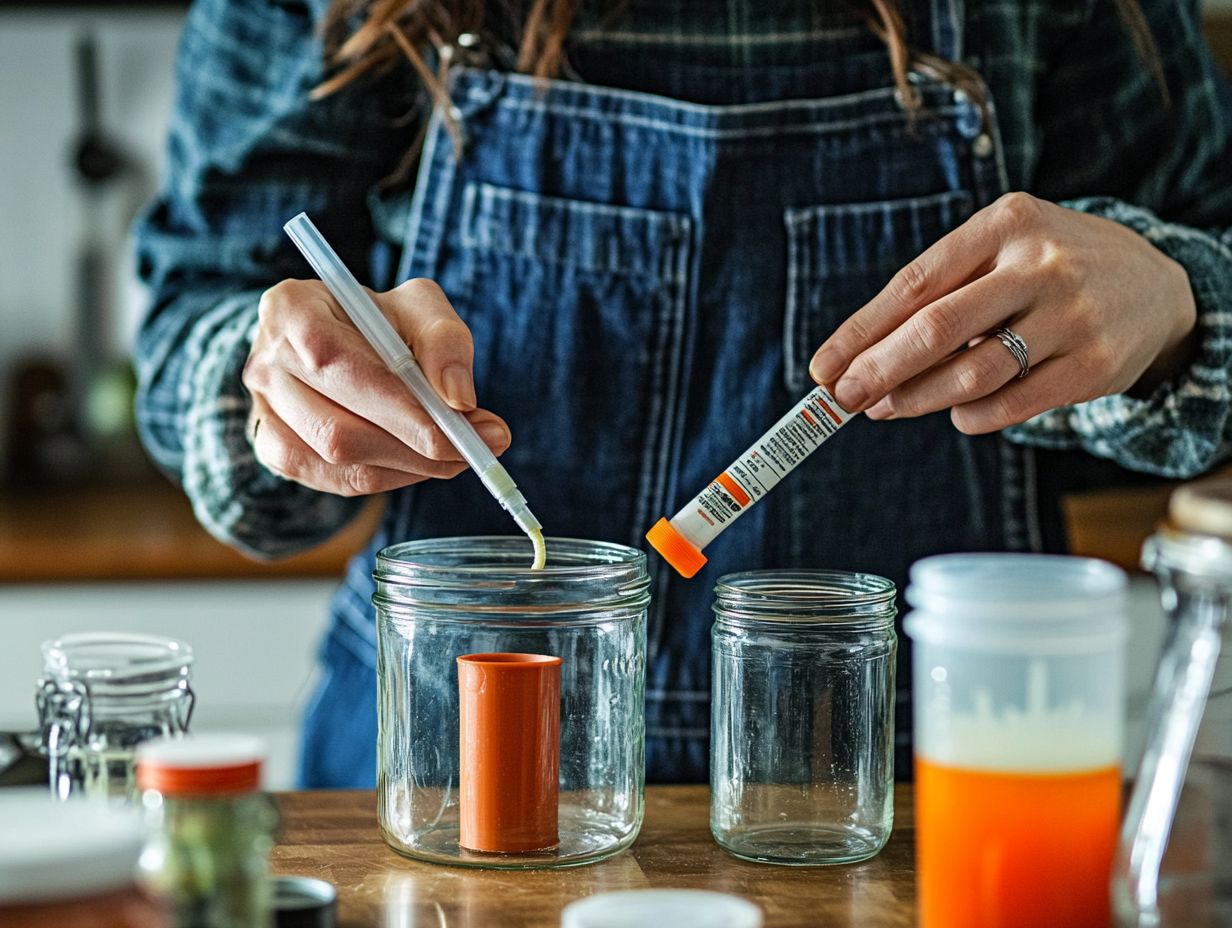
Several factors can significantly damage rubber seals, making it crucial for you to grasp their implications for canning success. Temperature fluctuations (changes in heat levels during canning) during processing can compromise seal integrity. Insufficient cleaning of rims, leading to food deposits, can also lead to issues. Lastly, the wear and tear of the rubber seal can ultimately result in seal failure.
Exposure to chemicals like acids or oils from food can degrade the rubber, weakening bonds and increasing the risk of leakage. Don’t overlook the impact of ultraviolet light; prolonged exposure can harden and crack the rubber, impairing its elasticity.
Excessive compression due to improper jar fitting can distort the seals, reducing their effectiveness over time. Each of these factors not only affects the initial performance of the seal but also poses a contamination risk that could jeopardize the quality and safety of your preserved foods. Understanding these risks will help you achieve the best results in your canning endeavors.
Repairing Rubber Seals in Canning
Repairing rubber seals requires a methodical approach to ensure that your canning process remains effective and your food is preserved properly. For guidance, check out how to repair common canning equipment. Begin by assessing the condition of the rubber rings; this step is crucial.
Next, clean the sealing surface meticulously. A clean surface is key to a good seal. In some instances, you may need to replace the lid if wear and tear are beyond repair.
By following the right sealing techniques, you ll help maintain the vacuum seal essential for effective food preservation.
Step-by-Step Guide to Fixing Rubber Seals
Fixing rubber seals requires your careful attention. Start by using a jar lifter to safely extract those cool jars from the canner. Then, take a moment to inspect the sealing surface for any food particles that could interfere with a proper seal. If you encounter any issues, check out how to handle canning jar leakage. A thorough cleaning will prepare the rubber seals for reprocessing.
This meticulous handling highlights the significance of maintaining optimal conditions for food preservation. After inspecting the jars, wash them in warm, soapy water, paying close attention to the rim and threads where the seal meets the jar. Even the smallest residue can prevent an airtight seal. Rinse them thoroughly and let them dry completely.
When it comes time to reprocess the jars, check the rubber seals for any signs of wear or damage. Compromised seals can lead to spoilage. Once they’ve been cleaned, ensure you store the jars in a cool, dry place, ready for your next canning adventure.
Preventing Future Damage
Preventing future damage to rubber seals is crucial for ensuring your food preservation and canning endeavors are successful and long-lasting.
By implementing regular maintenance practices such as maintaining proper storage conditions, closely monitoring temperature fluctuations, and routinely inspecting the seals you can significantly enhance their lifespan and effectiveness.
This proactive approach will ultimately safeguard your canned goods against spoilage, allowing you to enjoy the fruits of your labor for much longer.
Tips for Maintaining Rubber Seals
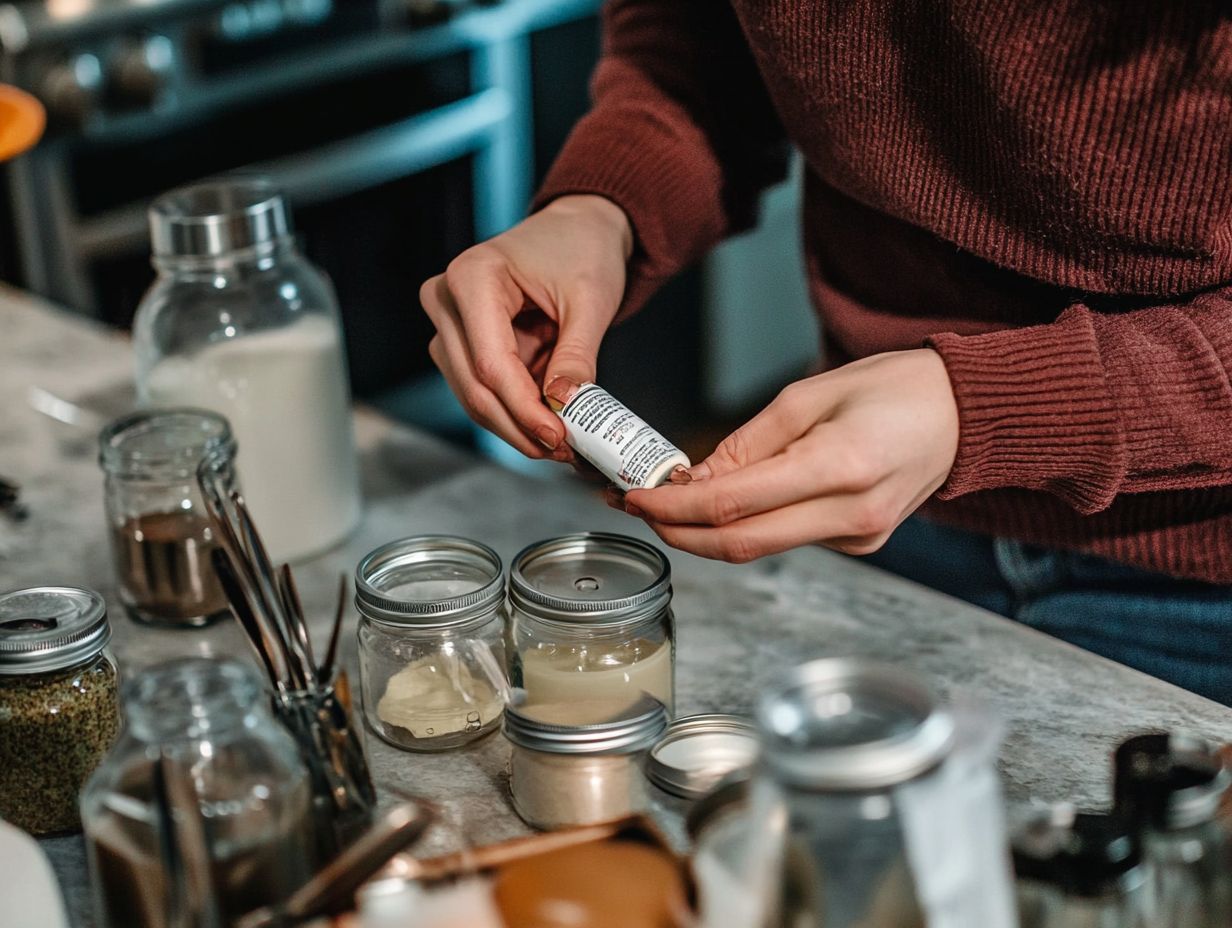
Maintaining rubber seals is crucial for preserving the quality of your canned goods. Start by regularly cleaning the rims before sealing. Additionally, using proper sealing techniques and controlling the temperature during the canning process are essential for ensuring that your rubber seals remain effective and durable.
It’s important to inspect your rubber seals for any signs of wear, such as cracks or punctures. These can seriously jeopardize the vacuum seal needed for optimal freshness. Opt for cleaning solutions that are free of oils and residues to ensure that the seals adhere properly during canning.
Aligning the lids correctly is also key improper alignment can lead to sealing failures and spoilage. Together, these practices form the foundation of effective canning, extending the lifespan of your stored foods while ensuring their safety and flavor.
Alternative Solutions
If your rubber seals are failing or worn, consider alternative solutions to secure your canning jars.
Options like Tattler lids and Weck preserving jars present innovative sealing methods that not only maintain the vacuum seal that keeps your food fresh but also accommodate a range of preferences and needs in your canning practices.
Other Methods for Sealing Canning Jars
Alternative methods for sealing canning jars offer versatility for every food preservation enthusiast.
Techniques like Tattler lids, glass lids, and other vintage supplies can significantly enhance your sealing effectiveness while adapting seamlessly to modern canning tools and personal preferences.
Tattler lids are a popular choice! They re reusable and made from strong materials, which help you seal jars securely while being eco-friendly. Just keep in mind that they require precise application and might present a steeper learning curve compared to traditional methods.
Glass lids, often found among antique canning treasures, offer a charming aesthetic along with a reliable seal. However, they can be heavier and a bit trickier to locate.
Incorporating vintage lids or antique supplies can add a unique touch to your canning projects. Ensure that these items still meet modern food safety standards. Always remember to follow canning instructions tailored to the materials you’re using.
These various sealing techniques cater not just to your individual preferences but also to your diverse needs, accommodating different types of food and enhancing shelf life. Diving deeper into these methods can enable you to select the best fit for your canning projects, elevating your food preservation game to new heights!
Frequently Asked Questions
How do I know when it’s time to replace my rubber seals in canning?

The best way to determine if your rubber seals need to be replaced is by inspecting them before each use. Look for cracks, tears, or other signs of wear. If the seals are no longer pliable or do not create a tight seal when closed, it’s time to replace them.
What tools do I need to fix rubber seals in canning?
You will need kitchen scissors, a clean cloth, hot water, and replacement rubber seals specifically designed for canning jars.
Can I reuse rubber seals in canning?
No, it is not recommended to reuse rubber seals in canning. Over time, they can become worn out and lose their ability to create a tight seal. To ensure food safety, it’s best to use new rubber seals for each canning session.
How do I properly clean and maintain my rubber seals?
To clean your rubber seals, wash them with hot, soapy water and rinse thoroughly. Make sure to dry them completely before storing. To maintain their flexibility, you can apply a small amount of vegetable oil to the seals and rub it in with a clean cloth.
What should I do if my rubber seals are too big for my canning jars?
If your rubber seals are too big, trim them to fit using kitchen scissors. Cut small sections at a time until the seal fits snugly on your jar. Be careful not to cut too much, as this can affect the seal’s effectiveness.
Can I use any type of rubber seal for canning?
No, it’s important to use rubber seals that are specifically designed for canning jars. Regular rubber bands or other types of seals may not provide a tight enough seal, leading to potential food spoilage or contamination.

